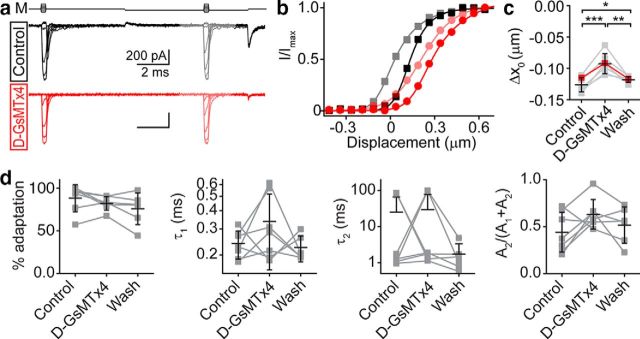Figure 11.
GsMTx4 effect on adaptation is minimal. a, Two-pulse experiments with a negative displacement adaptation step investigate d-GsMTx4 effects on adaptation. Activation curves after the adaptation step are colored lighter. M indicates the mechanical stimulus waveform. b, Activation curves for before (darker traces) and after (lighter traces) the adaptation step show that the adaptation shift is slightly decreased in the presence of 3 μm d-GsMTx4 (red and light red circles) compared with control (black and gray squares). c, Summary of cells shows the adaptation shift is decreased by 27 ± 9% (n = 7). Δx0 = x0(after) − x0(before). Red points are from the cell presented in a and b. *p < 0.05, **p < 0.01, ***p < 0.001. d, No significant differences were found in adaptation properties in the presence of d-GsMTx4 from the analysis of step responses like that seen in Figure 7a. Percentage adaptation was calculated as (1 − Isteady state/Ipeak) × 100. Double-exponential fits of the ∼50% peak current traces do not reveal significant differences in the time constants of adaptation (τ1 is the faster time constant and τ2 is the slower time constant) or the percentage contribution of τ2 [A2/(A1 + A2)]. Lines connect data points for a given cell and black error bars represent mean ± SD.

